As part of New York’s Central Park Conservancy project to reconstruct Grand Army Plaza, the William Tecumseh Sherman monument was brought back to life with newly applied 23.75-karat gold leaf. The monument restoration, included as part of the larger Plaza restoration project, called for the removal and reapplication of gold leaf on Augustus St. Gauden’s 1903 masterpiece. The sculptor favored bright, shining monuments, and disdained the look of bronzing as it darkened with age. Unfortunately, with weather wear and time, this was happening to the Sherman monument’s failed gilding.
Read more >
This turn-of-the-century lighthouse, also known as Hockomock Head Lighthouse or Swan’s Island Lighthouse provided fisherman and their schooners a beacon for safe travel in busy Penobscot Bay (ME, USA) starting in 1872 and still acts as a navigation aid today. In 1988 the lighthouse was added to the Register of Historic Places. In 1994 the US Coast Guard deeded the light station to the Town of Swan’s Island and by 2000 the Friends of Swan Island Light began working on a long-needed preservation plan. The plan called for adaptive public use while restoring each of the four buildings including the light tower.
Read more >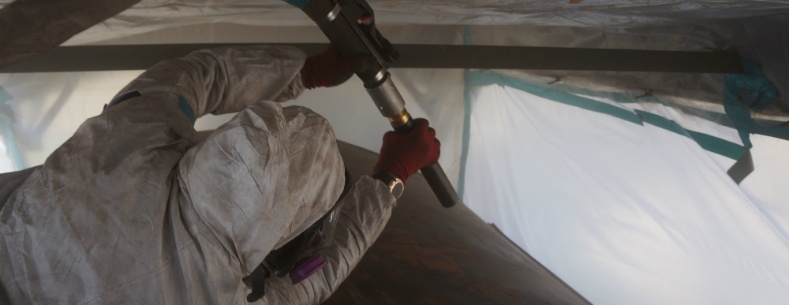
Many abrasive blasting industry products claim to offer low dust, dust free, or dustless blasting. In reality, no blasting media is dust free. “Dustless blasting” is a term commonly used to describe blasting that creates less dust (or fugitive airborne emissions) than traditional blasting methods. Abrasive blasting products prepare surfaces by striking substrates at high velocities using large volumes of compressed air. Sometimes the volume of air alone can generate airborne particles without any blasting being done.
Read more >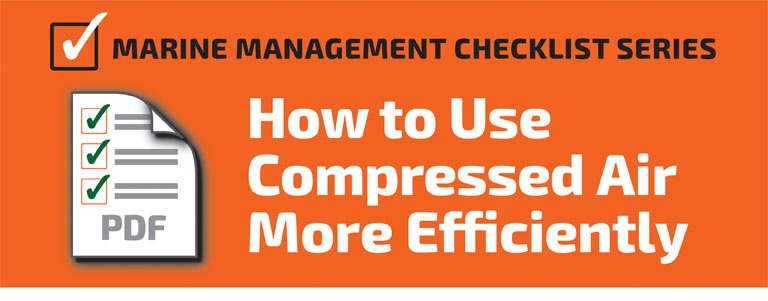
It’s becoming increasingly more apparent that companies in the commercial marine space, specifically shipyards, dry docks, and other industrial marine manufacturers are in major need of increasing their ROI while simultaneously decreasing production and repair time. That’s why Sponge-Jet is attending the International WorkBoat Show in New Orleans, Louisiana.
Read more >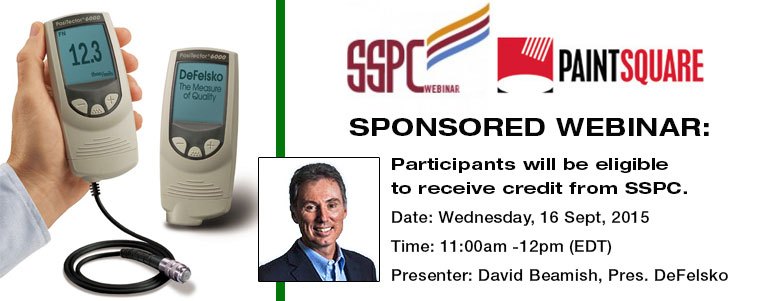
If measuring dry film thickness is part of your profession, sign up for this free webinar, which will discuss the latest revision of SSPC-PA 9, “Measurement of Dry Coating Thickness Using Ultrasonic Gages.” This standard describes procedures to measure the thickness of dry, homogeneous coatings applied to concrete, wood, wallboard, plastic, fiber and composite material using commercially available ultrasonic coating thickness gages.
Read more >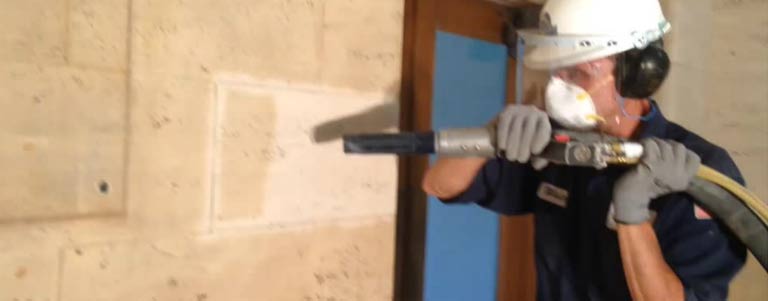
Duluth City Architect, Tari Rayala chose Sponge-Jet as the solution to clean the Duluth City Hall’s high profile, travertine limestone interior walls. Nearly a century of cigarette smoke, “dirtier forms of heating” and oils from visitors bumping the walls, left obscured the creamy fresh look that the stone can deliver. Premium Plant Services and Sponge-Jet are teaming up to complete the cleaning and restoration of the two story project.
Read more >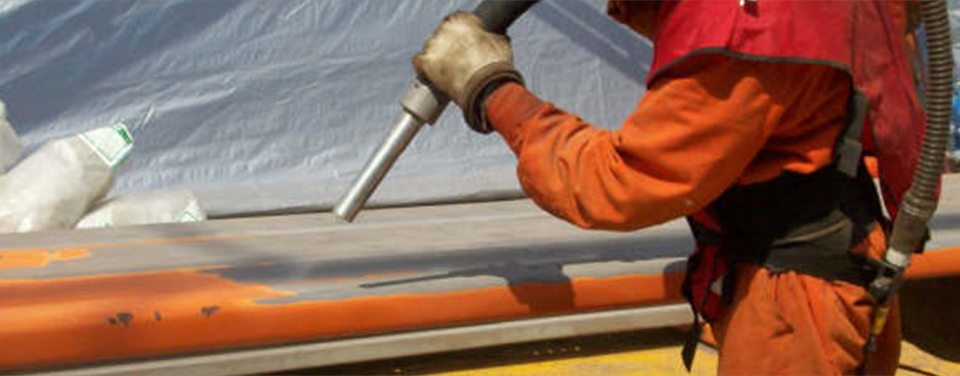
In OSHA’s recent fact sheet, “Protecting Workers from the Hazards of Abrasive Blasting Materials,” abrasive blasting technologies were strongly scrutinized. The fact sheet follows increasing pressure from the general public and industry watchdog groups to include a more holistic approach in protecting those working in and around abrasive blasting operations. The OSHA report discusses health hazards and worker protection methods, stating that, “Employers must protect workers from hazardous dust levels and toxic metals that may be generated from both the blasting material and the underlying substrate and coatings being blasted.”
Read more >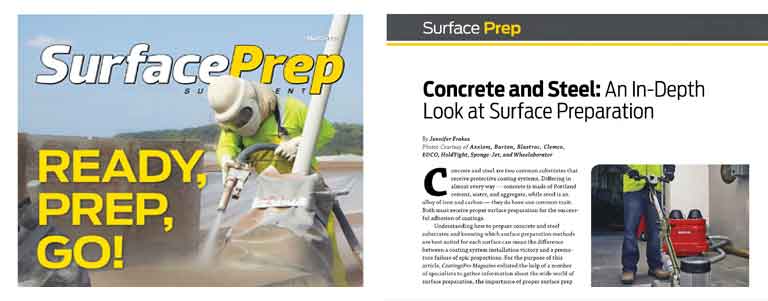
The recent release of Coating Pro’s annual Surface Preparation Supplement, calls out many solutions… but few effectively achieve the abrading and profiling of steel - and the cleaning, abrading and profiling of concrete. Take a minute to catch up using this concise snapshot on what’s new and happening in the industry. If you don’t have the time, below are some key points…
Read more >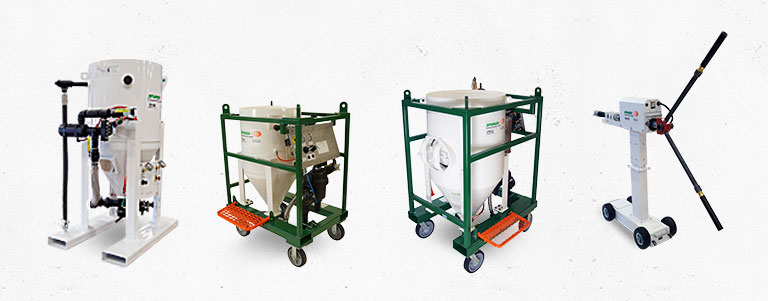
A new line of Sponge-Jet Feed Unit™ equipment and other products now make the entire blast process more reliable, productive and as safe as ever. The recent launch expands customer options like never before. The new products are designed to fit specific needs - for example production requirements, mobility requirements, unique environments and varied budgets. The largest Sponge-Jet product launch ever includes four new Feed Unit™ delivery systems, multiple configurations of Robotica™ Internal pipe and tank blaster, the B-VAC Pro™ 4 integrated system as well as a new expanded range of SaberBlast™ nozzles for maximizing productivity. These long awaited products continue the company’s legacy of durable, reliable and meaningful workhorse products that meet the needs of professionals who work in the most challenging environments on the planet. The new lineup of equipment and accessories, with links to learn more about each new product follows:
Read more >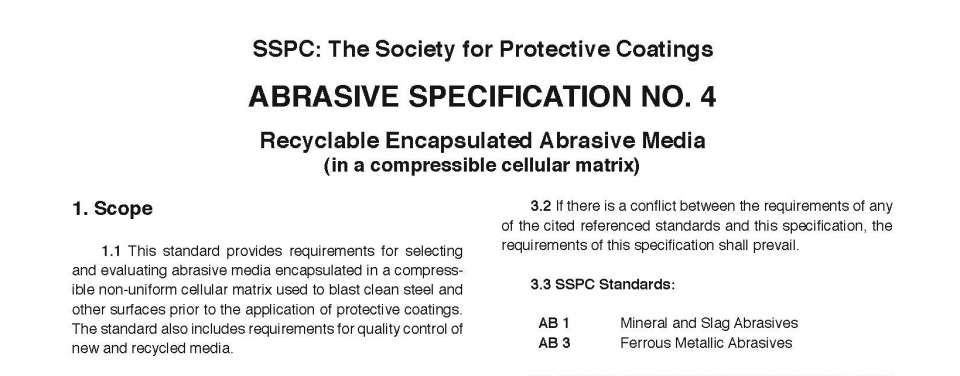
The Society of Protective Coatings (SSPC) released its latest Abrasive Specification – SSPC-AB 4, making it the first update since 2000. The AB series of specifications establish proper quality controls and procedures for using Recyclable Encapsulated Abrasive Media during surface preparation. While these standards are not referred to directly in many coating specifications, they are used from within other SSPC documents – most notably SSPC-SP7, SSPC-SP6, SSPC-SP10 and SSPC-SP5. These are perhaps the most widely cited standards for surface preparation worldwide and certainly within the USA. The SP series of standards has always required that abrasives meet an AB quality standard. Before this AB 4 release, exceptions allowed for the use of composite abrasives like Sponge Media, as no AB abrasive quality standards were applicable.
Read more >







